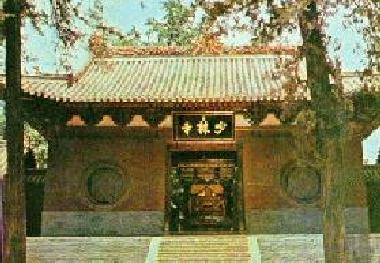DIFFERENCES BETWEEN SHAOLIN WAHNAM AND WHAT THE MONKS TEACH AT THE SHAOLIN TEMPLE

The Shaolin Monastery
Question
How different is your Shaolin Wahnam teaching from the teaching of the monks from the Henan temple? Does your curriculum include the original methods taught in Songshan, such as Xiaohongquan, Liuxingqquan and San Jie Gun?
-- Lam, Malaysia
Answer
The Shaolin Kungfu I teach at Shaolin Wahnam is very different from the kungfu or wushu taught at the Shaolin Temple in Songshan in Henan in northern China today, but very similar to the traditional Shaolin Kungfu taught at the Shaolin Temple in Fujian in southern China in the past.
In my opinion, what is taught at the Shaolin Temple in China today as well as by modern Shaolin monks from Songshan in other parts of the world is not traditional Shaolin Kungfu, but modernized wushu, although the modern monks teach kungfu forms like Xiao Hong Quan and Liu Xing Quan.
We sincerely believe that what we practice and teach at Shaolin Wahnam now is what was practiced and taught at the southern Shaolin Temple in China about 200 years ago. Hence, we do not practice or teach northern Shaolin forms and weapons like Xiao Hong Quan (Little Red Set) and San Jie Gun' (Three-Sectional Staff)
I do not know about Liu Xing Quan (Six-Form Set), but we do practice and teach Wu Xing Quan (Five-Form Set, or Five-Animal Set). Nevertheless, we do not pay much attention to forms as sets by themselves. This is one of the many differences between our teaching and that of the modern Shaolin monks.
This does not mean form is not important in our teaching, but we do not learn a set because of its forms. Rather, we employ typical Shaolin kungfu forms for combat application as well as for internal force training. In other words, to us form is a means, whereas to the modern monks from Songshan, as far as we know, form is an end by itself. This is another crucial difference.
A third difference concerns sparring. As revealed from their official webpages, sparring (or “san shou” in Chinese) taught by modern Shaolin monks resembles Western Boxing and Kickboxing, whereas we at Shaolin Wahnam use traditional Shaolin forms in our sparring.
Incidentally, this reveals a crucial difference in beleif and approach. To the modern monks from Songshan (as well as to many other kungfu schools), a kungfu set comes first, from which students learn kungfu techniques. In sparring they think of which techniques or patterns to use. Their progression is from sets to patterns to sparring. Because they may not be fast or spontaneous enough to come out with the appropriate patterns, they often resort to free-style fighting.
At Shaolin Wahnam the progression is reversed; it is from sparring to patterns to sets. This progression was not done by us. We are very lucky to inherit the tradition passed down by generations of masters. At first there was fighting. From millions of millions of real fights, effective combat technqiues evolved and were stylized as patterns. Appropriate sequences of patterns were formulated into sets. Hence, in our case we learn sparring first and kungfu sets last. Our kungfu sets are the result of our systematic training to emulate the ways Shaolin masters fought in the past.
Because our combat training is methodical, we can use our Shaolin forms spontaneously in our sparring. In other words, when an opponent punches or kicks us, or attacks us in any manner, we do not start to think of which pattern from our kungfu sets we should bring out to use; we spontaneously response to the attacks in the ways we have been systematically trained.
Another crucial difference concerns force training. We pay a lot of attention to force training, whereas the modern monks from Songshan pay a lot of attention to form practice. Our force training is mainly internal involving the training of energy and mind, whereas that of the modern monks is mainly external like push-ups, running and hitting sandbags.
A fifth crucial difference concerns philosophy. We are very clear on why and how we practice our Shaolin Wahnam arts. To us it is a comprehensive programme to develop ourselves physically, emotionally, mentally and spiritually so as to make life meaningful for ourselves and for others. I am not sure of the philosophy of the modern monks from Songshan, though they emphasize the teaching of “Chan”.
“Chan” or Zen is also of utmost importance to us at Shaolin Wahnam. But our approach and that of the modern Shaolin monks are different. In a nutshell, we practice Zen in our arts and daily life, like being simple, direct and effective, whereas the modern monks study Chan like discovering deeper meanings of Chan teaching in their kungfu movements.
LINKS
